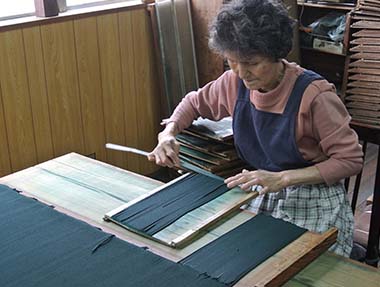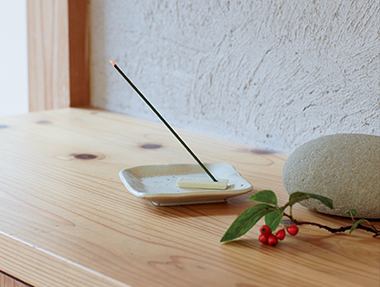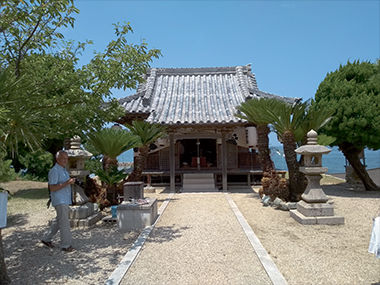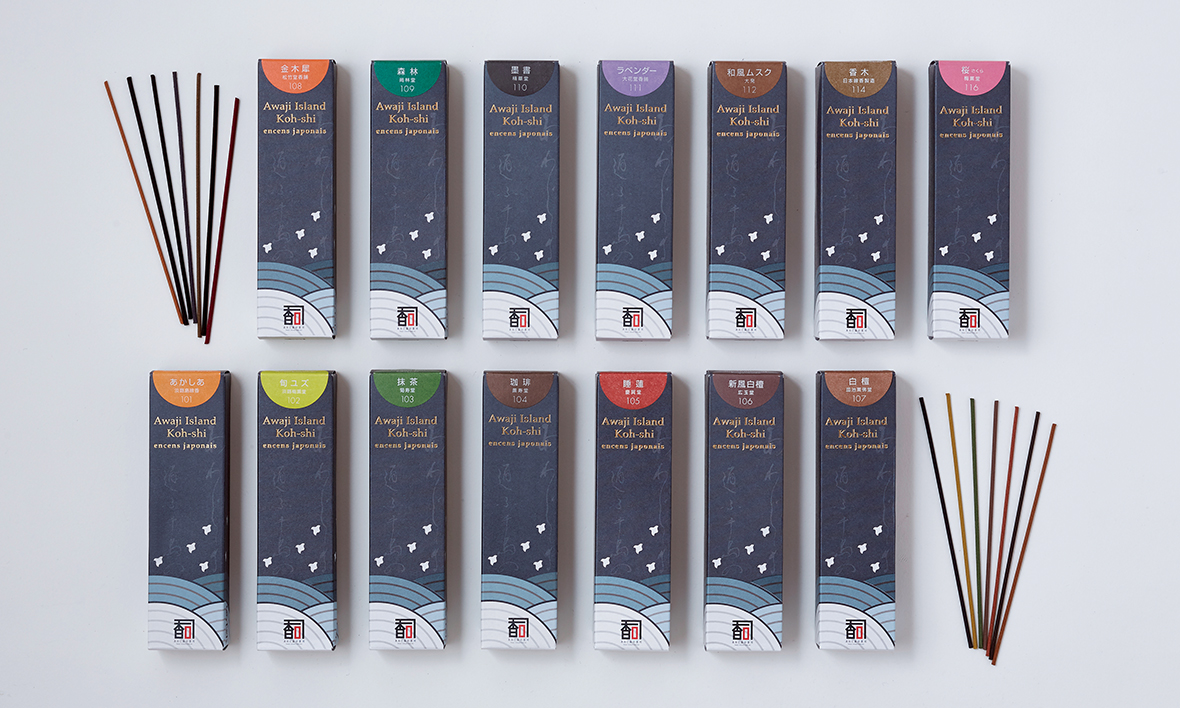Incense Japanese AWAJI Koh-Shi
HYOGO PREFECTURE INCENSE COOPERATIVE (Hyogo Prefecture)
Rich and subtle scents from a town embracing its Edo-period tradition of incense making
Awaji Island is the biggest producer of incense in Japan. The area got its start in incense production during the Edo period, after Tatsuzo Tanaka, a merchant in Eiura, brought in artisans and techniques from the Senshu region.
Over the course of its 170 year history as an incense producer, the region created an association in the Taisho period (1912-1926). Regional manufacturers worked with temples and wholesalers to develop the area, efficiently allocating the land to fully utilize each of the region’s fields of expertise. Despite having to adapt to the changing times, Awaji Island has been able to develop thriving incense industry. With globalization advancing in recent years, the region is working hard to develop products for overseas consumers and attend overseas exhibitions.
The Aromas of Japan series captures the approach of 14 incense craftsmen, showcasing beautiful fragrances common to Japan along with aromas that can be easily enjoyed by people overseas. 14 different scents are available, from deeply fragrant sandalwood and cherry blossom aromas common to Japan, to western-style aromas such as coffee and lavender. “Just like people in Europe enjoy aromas for their smell, I want people to take a more liberal approach to enjoying incense, which is traditionally used as an offering at graves and Buddhist altars,” says aroma craftsman Shigeaki Miyawaki.
This series also features a water lily aroma, which is considered a sacred flower in Japan, Europe, and other regions around the world. Awaji Island’s incense craftsmen are relatively well-known overseas, but brand awareness has yet to catch on domestically. I want to promote the region’s craft so that even more people will learn about it,” says Miyawaki. The workshop is full of high quality incense fragrances, each filled with the history of the Japanese people.

Handmade techniques are still used in Awaji Island’s incense workshops today
Even the layout and wrapping technique is highly refined
Different workshops on Awaji Island handle different processes. One workshop prepares the raw materials, kneading it and making it into a ball. Another workshop lays out the ball into strips and dries them into their final form. While today, many facilities are being automated, every process for incense making on Awaji Island is performed strictly by hand.

From entryways to living rooms and bedrooms
Useful fragrances for relaxation
Since ancient times, Japanese people burned incense to cleanse and purify spaces, incorporating a sense of holiness into their everyday living areas. Today, incense can be easily introduced into one’s daily life. Using this traditional and culturally rich product will fill the air with a sentimental sense of wonder. Using the incense in regular life, rather than just for Buddhist rituals, will help enrich each day.

Kareki Shrine, nestled on the west coast of Awaji Island. The island is mentioned in Nihon Shoki, an ancient Japanese legend about an aromatic tree, and even now, this ancient culture can be seen through the way incense production connects with the daily lives of the island’s residents.
HYOGO PREFECTURE INCENSE COOPERATIVE
621 Gunge, Awaji-shi, Hyogo
656-1511
Tel. 0799-85-1212
http://awaji-kohshi.com







































































